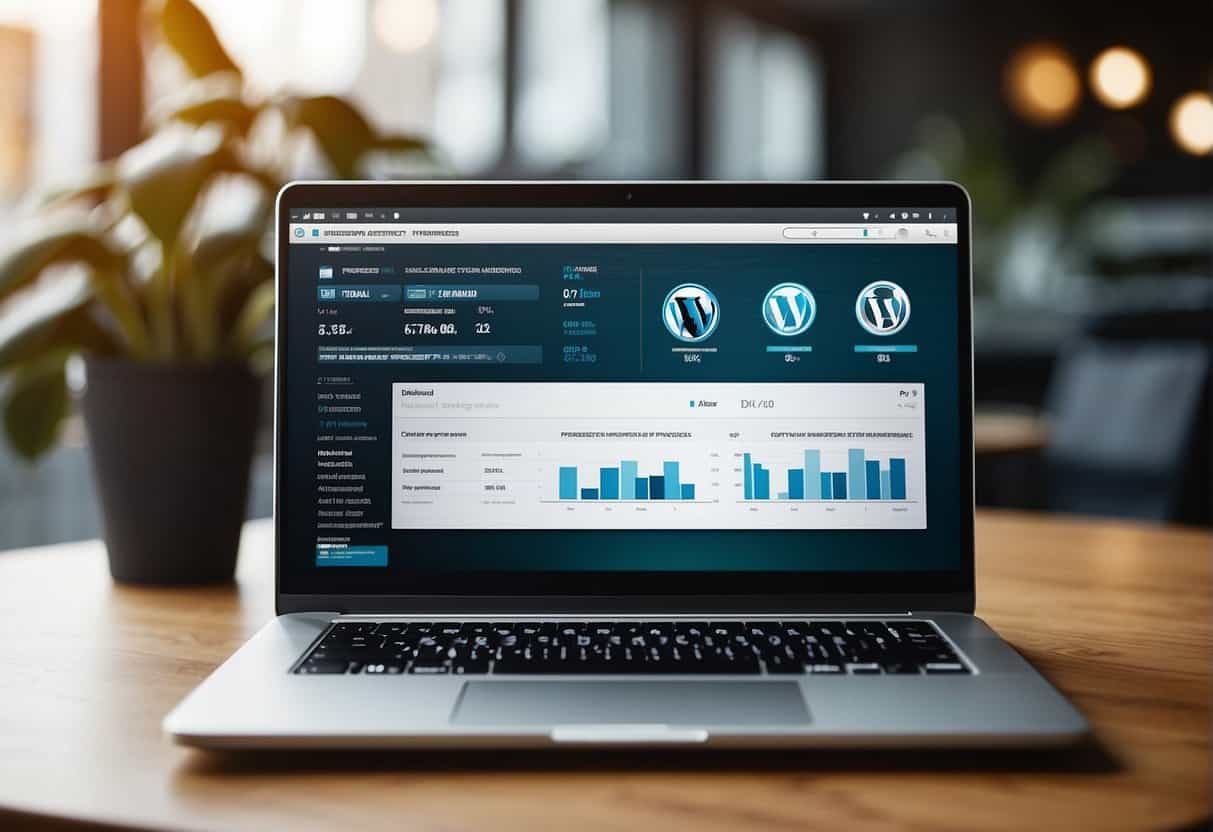Content marketing stands as a cornerstone strategy in the digital age, empowering businesses to draw in quality leads through valuable and relevant information. At its core, content marketing involves creating articles, blog posts, videos, and social media content that provide your audience with insightful, helpful information. By addressing your potential customers’ questions and concerns, you position your brand as an authoritative and trustworthy source, which naturally builds a more engaged and invested audience.
SEO, or search engine optimization, is the tactical counterpart to content marketing’s creative process. It’s the method of optimizing your content so it’s easily discovered by search engines and, by extension, by individuals actively searching for the information or solutions you provide. When you align your content marketing with solid SEO practices, you increase your visibility in search engine results, which can lead to a higher volume of organic traffic.
Integrating the two, you can create a synergy that not only attracts visitors to your site but also keeps them there by offering substantial value. This could be through informative blog posts that answer pressing questions, engaging videos that explain complex topics in a digestible manner, or social media content that encourages interaction and shares. Your content should aim to educate, inform, and perhaps even entertain your audience, leading them to see your brand as a resource they can rely on.
Building a Strong Foundation: Keyword Strategies
To attract quality leads, it’s essential to have a well-planned keyword strategy that aligns with how users search and what they are searching for.
Understanding Search Intent
Search intent relates to the purpose behind a search query. It is imperative for SEO because it influences the type of content you should create to satisfy user needs. Google’s algorithms are increasingly adept at discerning intent, making it critical to align your content with:
- Informational Intent: Users seek knowledge on a particular subject.
- Navigational Intent: Users search for a specific website or page.
- Transactional Intent: Users look to make a purchase or engage in another type of transaction.
- Commercial Investigation: Users consider a purchase and are researching options.
Mastering Keyword Research
Keyword research involves identifying terms and phrases your target audience uses to find products or services like yours. Start with tools such as Google Keyword Planner to discover relevant keywords. Seek keywords with a balance of high search volume and attainability, which indicates less competition.
Perform these steps for effective keyword research:
- Define your goals and target audience.
- Use keyword research tools to generate a list of keywords.
- Assess keyword relevance, search volume, and competition level.
- Identify long-tail keywords that are more specific and less competitive.
Strategic Use of Target Keywords
Once you’ve identified your target keywords, incorporate them strategically into your content:
- Place primary keywords in title tags, meta descriptions, headers, and within the first 100 words of your content.
- Use related keywords and synonyms to avoid keyword stuffing and ensure natural readability.
- Optimize images with keywords in the file name and alt text.
Remember, the goal is not to use as many keywords as possible but to use them in a way that feels organic to the content and provides value to your audience.
Ensure consistent monitoring and analysis of your keyword performance to refine your strategy over time.
Creating Compelling Content
To attract quality leads, it’s essential that your content not only stands out but also engages and educates your audience. Here’s how to create content that resonates and drives results.
Crafting Quality Blog Posts
When writing blog posts, your primary goal is to offer value to your readers. Begin with a catchy headline that piques interest and promises value. Ensure that your post is structured effectively with clear subheadings and concise paragraphs. Use bullet points to break down complex information, making it more digestible. Most importantly, each post should be infused with accurate and informative content that positions you as an authority in your field.
- Headline: Create a compelling headline that clearly states the value of your post.
- Subheadings: Use subheadings to guide readers through your content and make it scannable.
Producing Engaging Videos
Videos have the power to captivate and maintain viewers’ attention. To produce engaging videos, start with a script that has a clear narrative and includes key points you want to convey. High-quality visuals, good lighting, and clear audio are non-negotiable to maintain professionalism. Create content that is not only visually appealing but also provides practical information or solutions that viewers seek.
- Quality: Invest in high-resolution cameras and professional editing software.
- Information: Make sure the content of your videos is informative and adds value to your viewer’s experience.
Designing Informative Infographics
Infographics allow you to present data and concepts visually, making complex information easier to understand. Begin with a clear layout that logically presents the flow of information. Use a consistent color scheme and typography for better readability and brand alignment. Ensure each infographic is backed by credible data and presents a coherent story that supports your message.
- Layout: Design with a logical flow that guides the viewer from start to end.
- Data: Back your infographics with accurate data and sources to boost credibility.
Optimizing for Search Engines and Users
Optimizing your content for both search engines and users is essential for attracting quality leads. By focusing on on-page SEO and user experience, mastering link building, and enhancing readability and structure, you can drive organic search traffic and engage your audience effectively.
On-Page SEO and User Experience
On-page SEO directly influences how search engines understand your website’s content and how users interact with it. Begin by including relevant keywords in your title and subheadings. Then, create compelling meta descriptions that entice users to click through from search results. Remember to optimize images with descriptive ALT tags, which aid both SEO and accessibility for users.
Ensure a Seamless User Experience:
- Fast loading times
- Mobile responsiveness
- Intuitive navigation
The Art of Link Building
Link building is a powerful tool for SEO, as high-quality backlinks from reputable sites indicate to search engines that your content is valuable. Focus on obtaining backlinks through:
- Quality content creation
- Guest blogging
- Building relationships with industry influencers
- Use anchor text that is descriptive yet concise.
- Aim for links from sites with high domain authority.
- Avoid link schemes that can result in penalties.
Enhancing Readability and Structure
Readability affects both how users engage with your content and how search engines rank it. Break your content into small paragraphs and use subheadings to guide readers through your article. Making use of lists and tables can present information clearly and enhance comprehension.
To improve structure, consider the following:
- Use clear and concise language.
- Write short, well-structured sentences.
- Implement bold or italic to emphasize key points without overdoing it.
Promotion and Distribution Channels
Effective content promotion and distribution are vital for enhancing your online visibility and driving significant traffic to your website. Each platform provides unique advantages in attracting quality leads through strategic content dissemination.
Leveraging Social Media Outreach
Social media platforms are powerful tools to amplify your content reach. By posting regularly on these platforms, you can engage with your audience and direct traffic back to your site. Use bold for emphasis and italic to highlight keywords.
- Create shareable content: Develop infographics, videos, and articles that users are compelled to share.
- Engage with followers: Respond to comments and messages to build community and foster loyalty.
- Use hashtags strategically: Increase the discoverability of your posts with relevant hashtags.
Effective Email Marketing Strategies
Email marketing remains a direct channel to your audience’s inbox, allowing personalized engagement.
- Segmentation: Send targeted emails based on user behavior to increase relevance and engagement.
- A/B testing: Experiment with subject lines and CTA placements to optimize open rates and click-throughs.
- Provide value: Regularly send newsletters that include informative content, not just sales pitches.
Guest Blogging for Backlink Acquisition
Guest blogging on reputable sites can enhance your site’s authority through valuable backlinks.
- Select the right hosts: Only guest post on sites that are relevant to your niche and audience.
- Quality content: Your guest posts should add value to the host site and encourage readers to learn more about your brand.
- Anchor text strategy: Use strategic anchor texts for your backlinks to improve SEO and user understanding.
Measuring Success and ROI
Evaluating the effectiveness of content marketing in attracting quality leads requires a thorough understanding of key performance indicators (KPIs) and an ability to interpret data-driven insights. ROI and conversion rates emerge as pivotal metrics in demonstrating content strategy success.
Understanding Key Performance Indicators
KPIs are crucial in assessing the performance of your content marketing efforts. Common KPIs include web traffic, user engagement, time spent on the page, and lead generation. For SEO, specific KPIs like keyword rankings, backlinks, and organic search traffic reflect your content’s visibility and attractiveness to your target audience. It’s essential to track these indicators regularly to ensure your content aligns with your marketing goals and to refine your strategy for optimal results.
- Traffic Growth: Monitor monthly visitors to gauge content reach.
- Engagement Metrics: Track likes, shares, comments to understand user interaction.
- SEO Results: Keep an eye on keyword rankings and changes over time.
Conversion Rate Optimization
Conversion rate is a direct signal of how well your content motivates visitors to take desired actions—whether that’s filling out a form, signing up for a newsletter, or making a purchase. Improving your conversion rate hinges on providing valuable information and a seamless user experience that guides potential leads through your sales funnel. Utilize A/B testing of headlines, calls-to-action (CTAs), and page layouts to identify what resonates with your audience and encourages conversions.
- A/B Testing: Experiment with different elements on your pages to see what improves conversions.
- User Experience: Enhance navigability and provide clear, actionable steps for users.
Content Marketing Analytics
Lastly, content marketing analytics provide a wealth of data to inform ROI calculation. By analyzing which pieces of content drive traffic, engage users, and convert leads, you can assign monetary value to your content marketing efforts. Leverage analytics tools to dissect performance data and guide cost-effective decisions. For ROI, compare the revenue generated from conversions against the cost of content production and promotion to measure profitability.
- Performance Measurement: Track performance against pre-set targets and adjust strategies accordingly.
- Cost Analysis: Break down content creation and promotion costs for accurate ROI calculation.
Continuous Improvement
In content marketing, the landscape evolves constantly, necessitating regular content audits and adaptation to new SEO trends to maintain and improve your search engine rankings.
Content Auditing and Updates
To bolster your organic traffic, a systematic audit of your content is crucial. Examine each piece to ensure that it still resonates with your audience and ranks well for its intended keywords. Update content to include:
- Trending topics
- Recent statistics
- Relevant keywords
This will help improve the relevancy of your content, which is a significant Google ranking factor.
Keeping Pace with SEO Trends
SEO doesn’t stand still, and neither should you. Stay updated with SEO updates to keep your content performing well. Keep track of:
- Changes in Google’s algorithm
- Emerging trends in your niche
- Shifts in user search behavior
By doing so, you can adjust your strategy to maintain or improve your rank in search results, driving more organic traffic to your site.







